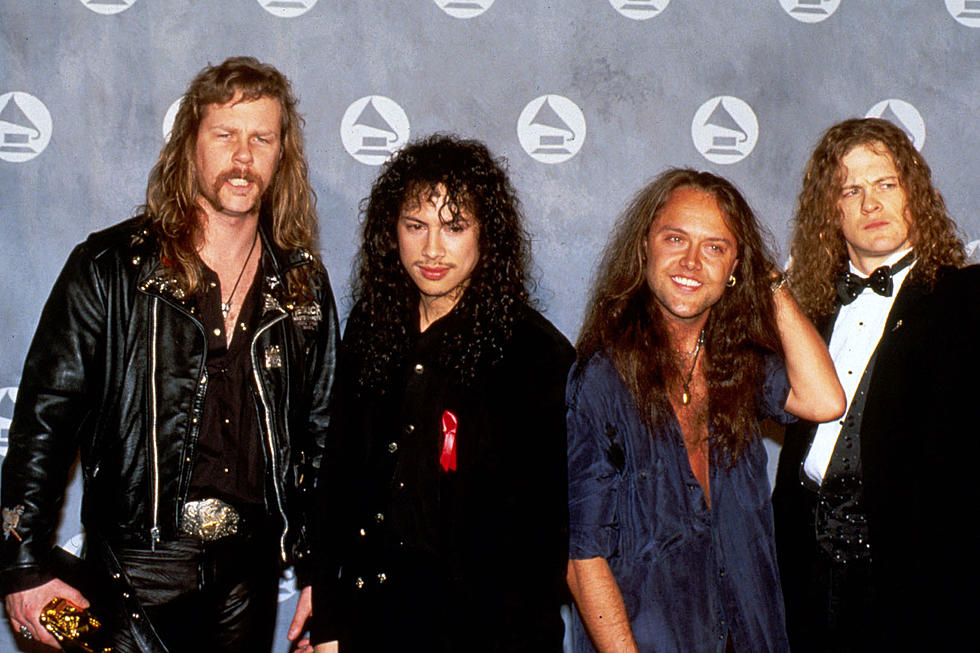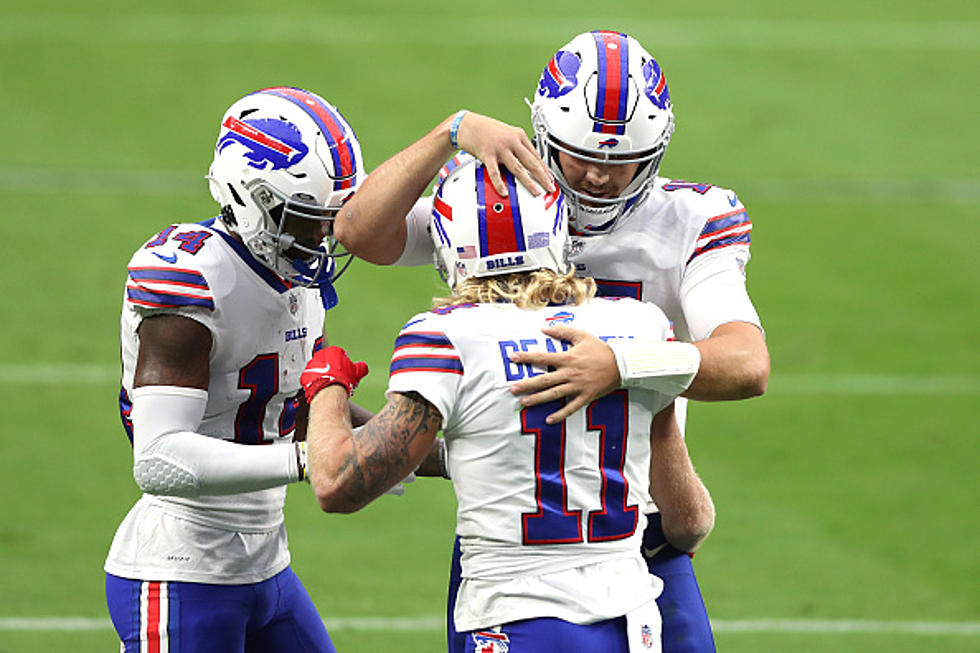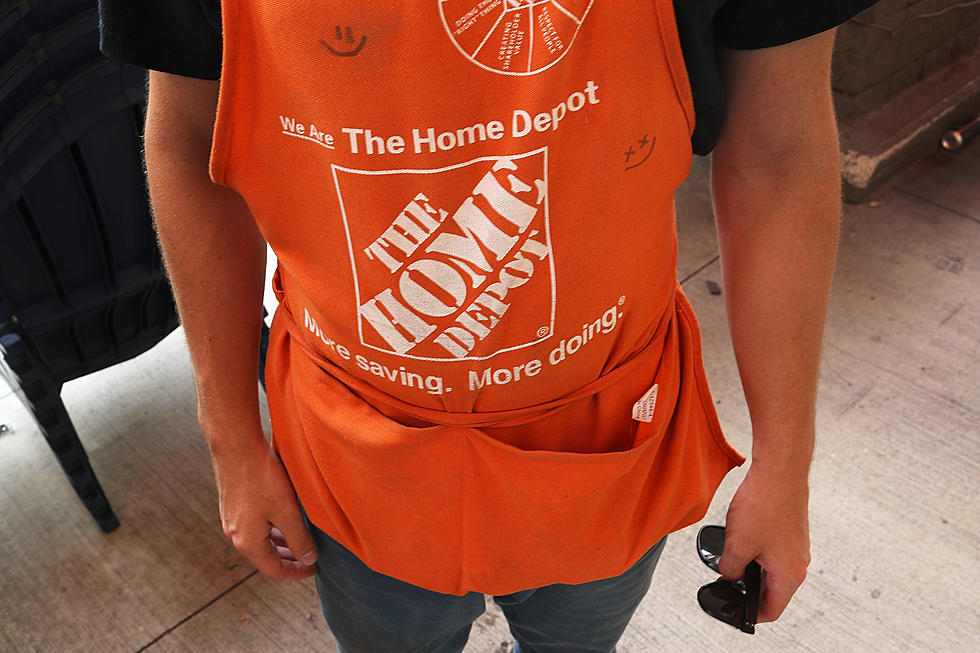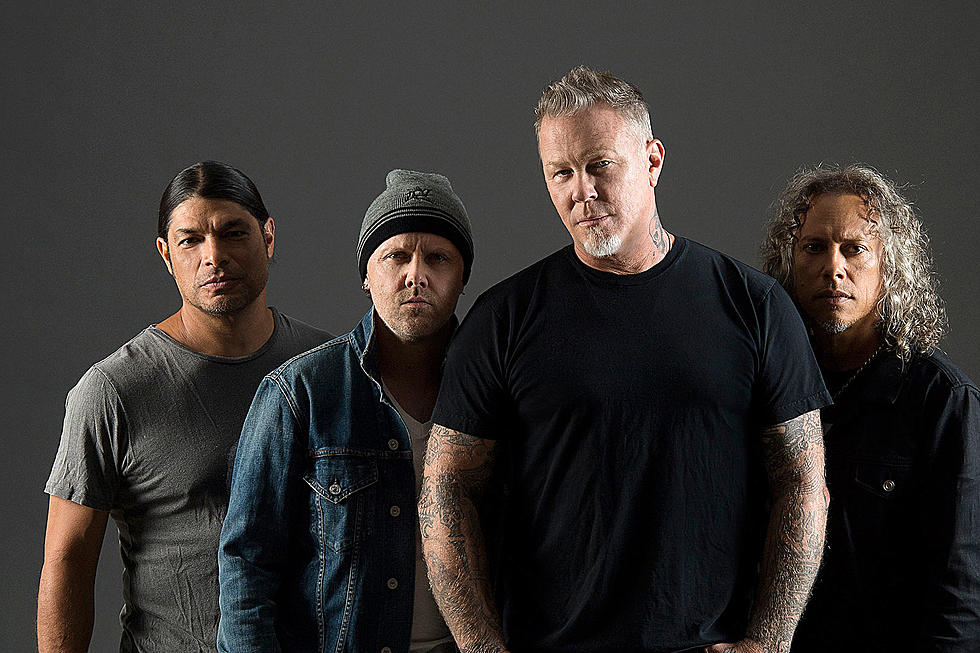
How Metallica’s Fashion Influenced Rock – An Excerpt From ‘The $24.95 Book’
Music journalist Ben Apatoff's illuminating new examination of Metallica, The $24.95 Book, shows just how far the premier metal band's cultural reach extends beyond their music.
Covering all corners of Metallica's career so far, it has chapters dedicated to each band member and to each album the group has released, in addition to explorations of the act's impact on other entertainment constructs such as fashion, film, fandom and more.
Indeed, it's Metallica's take on fashion (or anti-fashion, as the case may be) that's the topic at hand today in an exclusive for Loudwire readers. Apatoff and his publisher have shared a sample chapter from The $24.95 Book — "So Wicked and Worn," focused on Metallica's wardrobe and how it played into the rock pantheon — that can be read in full below.
When you're done reading, click here to order The $24.95 Book. The publication, issued on Aug. 15, references its suggested retail price in its title, just as Metallica's The $5.98 E.P. did in 1987.
SO WICKED AND WORN
Metallica’s Fashion
By Ben Apatoff
“When you’re fortunate enough to not be part of anything that’s too fashionable, you have the opportunity to stick around as all the other fashions and things wither away.”
–Lars Ulrich
Combing through scores of early Metallica interviews, it’s astonishing how often their wardrobe comes up. (Q. “Why don’t you get dressed up for your shows?” James: “We are.”) Metal had already established some fashion sense, from Judas Priest’s leather and studs to Motörhead’s bullet belts to Def Leppard’s spandex. The biggest bands wore costumes, but people are curious to see young Metallica in T-shirts, ripped jeans and sneakers. “We’re doing a segment called ‘Addicted to Style,’” an MTV interviewer tells Jason Newsted and Lars Ulrich in 1986. “Visually, describe your style.” The boys laugh, and Lars says, “Comfortable.”
“The only look we had was ‘ugly,’” James recalled in 2001.
Several critics, Chuck Eddy and Chuck Klosterman among them, have called Metallica their generation’s Led Zeppelin, which ignores that (a) Led Zeppelin is every generation’s Zeppelin, just as Metallica is each generation’s Metallica, and (b) Metallica in no way entertain the sexy rock star image in Zeppelin’s ethos. Other critics, particularly metal-averse ones, like to write about how Metallica brought punk realism to metal on Kill ’Em All, and there’s some truth to that. But in person, they dressed more plainly than punk — no dye, spiked hair, safety pins or really any look associated with the punk movement. Years before grunge was celebrated for giving rock music a disheveled look, Metallica were changing notions of how rock stars dressed. Only after grunge blew up on the heels of The Black Album, making jeans and flannel the standard rock star look, did Metallica start glamming up with guyliner on Load. When nu-metal brought baggy jeans and ball caps to MTV, Metallica were donning dress shirts for S&M.
Of all the biggest nineties rock music video stars, Metallica might be the only one with no members who could be turned into a recognizable Halloween costume. Nearly everyone has a defined sense of how Axl Rose, Slash, Kurt Cobain, Angus Young, Ozzy Osbourne, Courtney Love, Bono, Trent Reznor, Anthony Kiedis or Eddie Vedder dress. Not so much James Hetfield or Lars Ulrich. In a 1988 Monsters of Rock documentary, Sammy Hagar marvels at the opening band who just rocked L.A. so hard that the Memorial Coliseum power had to be shut off while security tackled and arrested fans. “When you see Metallica in the hotel, on the day off, they’re dressed exactly like when you see them onstage,” quips the Cabo Wabo man. “They’re not putting on a show.” (Goth Kirk has one of the best lines: “This is the most sun I’ve gotten in two years.”)
But Metallica does put on a show. Dressing more like their fans than other metal bands showed that Metallica had a different sense of who their peers were. Lars’ purposely unshaven peach fuzz on the back of Kill ’Em All makes him look even younger than his nineteen years, more like someone walking out of the principal’s office than a guy whose band is about to play Holland with Twisted Sister. When Lars saw the fan-designed “Alcoholica: Drank ’Em All,” shirt, Metallica printed and wore their own. Metallica’s 1986 Spin profile notes their wardrobe is as important to their image as Angus Young’s schoolboy outfit is to AC/ DC, described as “the uniform of their average fan, the Teenage American Slob.” “Whatever those guys did in front of the camera, me and my friends got it,” remembers a young fan in Back to the Front. “Whether it was having a laugh or looking hard . . . we felt like these are our friends. ‘I know those dudes.’”
“We’re doing something people aren’t used to, which is to act like real people both onstage and off,” Lars told Metal Muscle in May 1987. “Metallica is not a band you put on a pedestal.”
It’s a philosophy that’s served Metallica well. Watching Metallica’s awards show performances through the years, it’s fun to see how dated the younger bands sound and look. When Metallica steps up with “Hit the Lights” at MTV Icon, written before some of the show’s celebrity guests were born, Metallica sounds more like the future than anything performed in the show’s preceding hour. The older men are unaffected by the kids’ pop punk and nu-metal fashions, although Snoop Dogg looks sharp in a Metallica long sleeve.
In his It’s Electric! appearance, Billy Corgan remembered young Metallica at the Aragon Ballroom in Chicago. “You guys come out, James is wearing the cut off jean jacket, you guys looked like the guys I went to fuckin’ school with. I was like, ‘These people understand the world I’m in. . . . Thank God somebody gets it.’”
It didn’t come immediately to Metallica. In photos pre–Kill ’Em All, Lars can be seeing wearing spandex and James has a bullet belt he took turns sharing with Dave Mustaine. They look more like boys in metal god cosplay than the metal gods they’d become. Even Metallica’s infamous demo tape, named for the first lyric of their first song, takes its name from fashion, embodying the trend they were about to demolish. Looking at teenage Metallica is a little like looking at pre-fame photos of the Beatles smoking cigarettes in leather jackets, or the Stones in mop tops and matching blazers, trying to figure out what skin they’re most comfortable in. Their eventual look helped make Metallica iconic, giving them a style that’s outlasted the fashions of the MTV VJs interviewing them. The fans noticed — in D. A. Pennebaker’s 101, the Depeche Mode doc at the Rose Bowl, a fan traveling with the fashionable band (literally their name— French for “fast fashion”) compliments a young Latino’s shoes. “Isn’t that like the newest trend here?” he asks, snapping a picture. The young man smiles. “Metallica-style,” he beams.
“We stay off any image thing—we don’t come out with spiked hair, all this makeup or a ton of leather and studs,” Lars told Circus in January 1987, dismissing punk and metal fashions in one swoop. Metallica created thrash fashion (thrashion?), building the trends that didn’t define but distinguished its best bands. Slayer abandoned blood and corpse paint shortly after Show No Mercy, looking infinitely scarier on the back of Reign in Blood, where it’s revealed the most Satanic music is made by guys you might see on the street. Armored Saint’s Joey Vera credits Lars with encouraging him to ditch their band costumes. When Dave Mustaine left Metallica for Megadeth, he didn’t take the bullet belt with him.
Being Metallica, they also abandoned the trends they created. The Load-era Anton Corbijn photoshoots distanced themselves from the bands they inspired, angering some fans as much as “The Unforgiven II.” Metallica’s bank accounts started showing up in their outfits (Kirk: “If you saw my army of shoes, you’d call me Imelda”), something many Master of Puppets fans never forgave them for, even the ones who claim to care exclusively about Metallica’s music and not their image. A photograph of James Hetfield in plaid shorts, sunglasses and flip-flops, carrying his wife’s Armani shopping bag while Robert Trujillo looked on, went viral in 2008, inspiring memes, parodies and other derision, and was even used to criticize the band in several major publication Death Magnetic reviews (James laughed it off in a Newsweek interview). But to paraphrase Lars, Metallica didn’t come to fashion, fashion came to them. Metallica made ugly fashionable, to the point where they were invited to be the faces of the Italian luxury menswear line Brioni in 2016, selected for their “rugged, masculine” look. They’ve since modeled Saint Laurent for a Clash magazine feature. They’re not pretty, which is part of their brand. If James Hetfield looked like Sebastian Bach, he couldn’t be James Hetfield. But Metallica changed conceptions of who could set trends and model fashion.
But Can You Name a Song?
In a 2016 video for BuzzFeed Mexico, James is shown a series of celebrities wearing Metallica shirts and asked to judge them (James: “What’d you call it? ‘Reggaeton’?”). He laughs about their choices and being unable to remember the name Ryan Gosling. But after years of representing outsider status, Metallica shirts are haute couture. Barney’s, H&M and Urban Outfitters have all sold comically expensive Metallica shirts. Rappers, pop stars, actors, DJs and reality TV stars can be seen repping the guys who wanted to name their first album Metal Up Your Ass. This sometimes causes an internet furor, as it did when a Real Housewives star was unable to name a song by the band while wearing a customized …And Justice for All shirt. But who can blame her? It’s a cool shirt. Besides, the man who wrote the albums and designed the logo has no problem with it. “When I see some kid out on the street with his parents and he’s got a Metallica shirt on, whether he’s heard of us or not, it’s a statement, you know?” James said in 2017. “It is a statement, so I love that.”
Metallica: A Photo Timeline of Their Remarkable Career
More From 92.9 WBUF






![Cole Beasley and Isaiah McKenzie Stir Up Controversy Over NFL Mask Fines [TWEETS]](http://townsquare.media/site/17/files/2021/08/attachment-gettyimages-1234353006-594x594.jpg?w=980&q=75)



